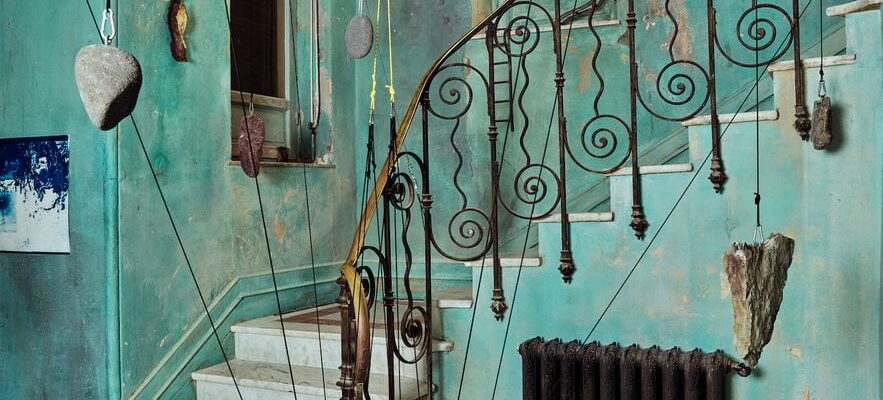On the heights of the city of Angels, the old lady spreads out in majesty. Apparently, nothing has changed since the Belle Epoque which saw it built under the leadership of a prosperous pastry chef from Nice. Before, years later, being left abandoned, squatted, tagged, invaded by cracks and bats. At the cost of 1,000 twists and turns, her closest neighbors, Hélène and François Fincker, ended up acquiring the sleeping beauty in 2003 to create an alternative art venue. Villa Cameline, its original name, then became the Abandoned House. Understand “abandoned to the creativity of artists”.
Neither a museum nor a substitute for a gallery, the residence offers them a springboard towards recognition and a setting that remains in its original state which they have the sole constraint of not touching. At the antipodes of White box and over the years, between these faded walls with peeling woodwork, enhanced by a cathedral ceiling and glass bead chandeliers, there have been installations, performances and Cabinets of all kinds – erotic, neurotic, democratic…
With no other compass than their taste for art and instinctive affinities, the Finckers, who are, in the city, experts in nuclear medicine and professionals in cultural communication, have already welcomed more than 300 artists and around sixty exhibitions here. . The Abandoned House is now a full-fledged player in the artistic sphere of the South of France. And soon beyond if we are to believe the ambitious meeting which opens there this June 7 and which we will be able to discover until July 13. It is the result of a collaboration between the Maison and the Salle Alfred-Pellan in Laval, Quebec, which will in turn host the exhibition from September.
Vulnerable humanity
Curated by Hélène Fincker, in Nice, and Jasmine Colizza, in Laval, eight Canadian and French artists worked on a complex theme: Eternity, if possible. An extension to Atomic cabinet presented here in 2018, which addressed, through art, the trivialized dangers of nuclear power: power plants anchored in the landscape, tests in North Korea and Polynesia, radioactive waste management… Since then, the pandemic, the climate emergency and the threat of nuclear war were invited to the debate.
Tom Barbagli, “The time of stones”, 2021. Comtoise pendulum mechanism, cable, ropes, pulleys, tensioners, stones.
/ © Abandoned house [Villa Cameline]
How can humanity reflect on the notion of survival in the face of these multiple sources of risks which add up and further increase its vulnerability? “The works question the disappearance of our ways of life by displaying an irreversible past, a worrying present and an uncertain future, while illustrating this powerful desire inherent to Western humans, that of being eternal,” explain the curators.
Thus, time, light and gravitation are at the heart of the suspended gear of rock, sand and metal with spherical shapes set in motion by the young Nice native Tom Barbagli who gave birth to the poetry of engineering. The Montérégie Chloé Beaulac, for her part, documents, like an ethnologist, the mutations of nature through a multidisciplinary creation mixing prints, photography, drawing or sculpture, while her compatriot Martin Bureau points out the disorders of the world by combining research in geopolitics , documentary cinema, painting and video. It is undoubtedly he who offers the most pessimistic interpretation of this Eternity, if possiblewith the dizzying shaping of a “poetics of disaster”.
“Eternity, if possible”from June 7 to July 13, 2024, Franco-Canadian exhibition at La Maison Abandonnée [Villa Cameline]in Nice.
